How the Jews Defeated Hitler
How the Jews Defeated Hitler
Exploding the Myth of Jewish Passivity in the Face of Nazism
Benjamin Ginsberg
Rowman & Littlefield Publishers, Inc.
Lanham Boulder New York Toronto Plymouth, UK
Published by Rowman & Littlefield Publishers, Inc.
A wholly owned subsidiary of The Rowman & Littlefield Publishing Group, Inc.
4501 Forbes Boulevard, Suite 200, Lanham, Maryland 20706
www.rowman.com
10 Thornbury Road, Plymouth PL6 7PP, United Kingdom
Copyright 2013 by Benjamin Ginsberg
All rights reserved. No part of this book may be reproduced in any form or by any electronic or mechanical means, including information storage and retrieval systems, without written permission from the publisher, except by a reviewer who may quote passages in a review.
British Library Cataloguing in Publication Information Available
Library of Congress Cataloging-in-Publication Data
Ginsberg, Benjamin.
How the Jews defeated Hitler : exploding the myth of Jewish passivity in the face of Nazism / Benjamin Ginsberg.
pages cm
Includes bibliographical references and index.
ISBN 978-1-4422-2238-0 (cloth : alk. paper) ISBN 978-1-4422-2239-7 (electronic) 1. World War, 19391945Jewish resistance. 2. World War, 19391945Participation, Jewish. I. Title.
D810.J4G554 2013
940.53089'924dc23
2012050050
 The paper used in this publication meets the minimum requirements of American National Standard for Information SciencesPermanence of Paper for Printed Library Materials, ANSI/NISO Z39.48-1992.
The paper used in this publication meets the minimum requirements of American National Standard for Information SciencesPermanence of Paper for Printed Library Materials, ANSI/NISO Z39.48-1992.
Printed in the United States of America
For Sandy
Acknowledgments
In writing this book I benefited greatly from conversations with my friends Robert Kargon and David Satter. David read the entire manuscript and Robert shared with me his knowledge of Soviet history. My thinking about this topic was also clarified by many classroom discussions with my students at Johns Hopkins. Indeed, during a class discussion of Nazism, one Hopkins undergraduate, Shane Pinzka, asked the question that launched the book. I am, of course, also very grateful to my agent Claire Gerus, my editor Susan McEachern, and my production editor Jehanne Schweitzer for their wonderful efforts at various stages of the project.
I should observe, too, that in telling me their life storiesand surviving the events described belowmy late parents, Anna and Herman Ginsberg, not only inspired but quite literally made this book possible.
Benjamin Ginsberg
Potomac Maryland
February, 2013
Introduction
The Problem of Jewish Resistance
During a class discussion of Nazism, one of my students said he simply could not understand why the Jews hadnt resisted the efforts of the Germans to exterminate them. This assertion is, of course, quite common and not limited to undergraduates. The noted historian Raul Hilberg, for example, wrote, The reaction pattern of the Jews is characterized by almost complete lack of resistance. Measured in German casualties, Jewish armed opposition shrinks into insignificance. My response to the student, which became the topic of this book, was that the Jews had not only resisted but actually played a major role in the defeat of Nazi Germany. The question, I said, was not whether the Jews fought but where and by what means.
Let me make two points at the outset. First, Jewish resistance to the Nazis should be characterized as a form of cumulative rather than collective action. That is, for the most part, Jewish resistance lacked even a modicum of central coordination or leadership. It consisted of a host of disparate groups, individuals, and organizations on several continents mounting various responses, ranging from partisan warfare through nuclear research, to the threat of Nazism. These uncoordinated efforts, however, were channeled by a common threat and cumulated into what we shall see was a potent, albeit sometimes futile, response to the Germans.
A second point concerns the meaning and scope of the term resistance. Jewish resistance is often defined narrowly to refer to the activities of Jews in the occupied lands of Europe. Yet, just as the French Resistance operated outside as well as inside France, Jewish resistance and opposition to the Nazis manifested itself in a number of settings both inside and outside German-occupied territory. To ignore this point is to risk distorting the historical record. The discussion of Jewish resistance normally focuses on villages, ghettos, concentration camps, and other locations where whatever resistance arose was certain to appear feeble and was usually futile. Desperate and unarmed Jews in Eastern European shtetlekh (villages), city ghettos, and death camps hardly had the means to resist. Unarmed individuals cannot exactly mount armed resistance. Some fought nonetheless. There was resistance in nearly every major ghetto, and revolts broke out in virtually every concentration camp. Jewish undergrounds were organized in, for example, the Warsaw, Minsk, Vilna, and Bialystok ghettos, and some Jews who survived the liquidation of those ghettos, as we shall see in chapter 5, joined partisan groups in the forests. And revolts broke out even at the Treblinka, Sobibor, and Auschwitz Vernichtungslager (extermination camps), among others. These were, however, easily and quickly suppressed by the Germans.
There seems little doubt, though, that in the ghettos and death camps, hoping to save their own lives and those of their family members, more Jews cooperated and even collaborated with the Germans than resisted. How could it be otherwise? Without weapons or military training or outside support, and guarded by ruthless and heavily armed German paramilitary police and their Ukrainian, Croatian, or other Hilfswillige (non-German volunteers known as Hiwis who worked in various capacities for the German army), few would resist, whether they were Jews or Americans, Englishmen or Frenchmen. Most would cooperate hoping to live another day. Some would collaborate hoping to survive even longer.
Hannah Arendt claimed that the Nazis depended on the cooperation of the Judenrte (the Jewish Councils established by the Germans to administer the day-to-day life of the ghettos), the Jewish police, and so forth to administer the final solution. To a Jew, said Arendt, this role of the Jewish leaders in the destruction of their own people is undoubtedly the darkest chapter of the whole dark story. Arendts claim is certainly true, particularly in the case of the Lodz ghetto, led by Chaim Rumkowski, who insisted on cooperation with the Germans until the very bitter end. Arendt was correct to view this as an exceedingly dark story. But the part of the story that so offended her doesnt distinguish the Jews from anyone else.
The head of German security in Amsterdam, for example, said, The main support of the German forces in the police sector and beyond was the Dutch police. Without it, not 10 per cent of the German occupation tasks would have been fulfilled. Members of the Dutch police, along with thousands of Dutch Nazis, volunteered to serve in the Wehrmacht and formed the Thirty-fourth SS (Schutzstaffel) Volunteer Division, Landstorm Nederland. The same was true of the French. As many, if not more, collaborated as resisted. Until the Americans, British, and Canadians landed at Normandy, the Germans had little trouble occupying France with 3,000 to 4,000 of their own military police officers and the assistance of 100,000 cooperative French policemen and 40,000 members of the French paramilitary Milice. As in the Netherlands, French volunteers, many drawn from the Milice, joined the German army, forming the Thirty-third Waffen SS Division, Charlemagne.

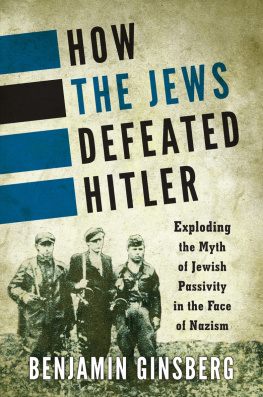
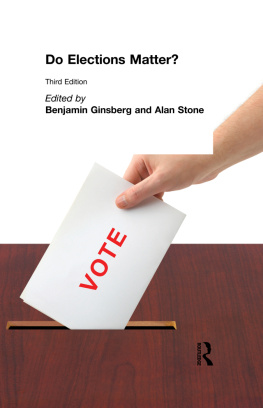
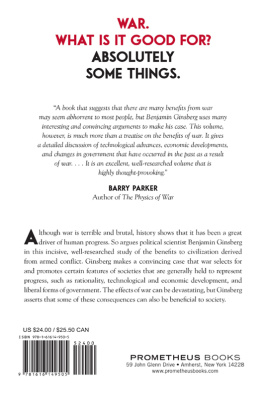
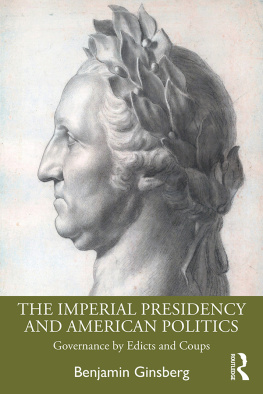

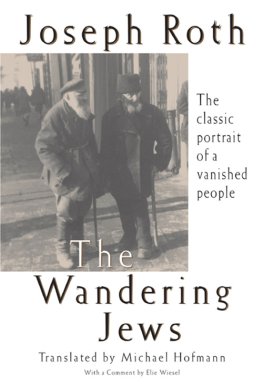

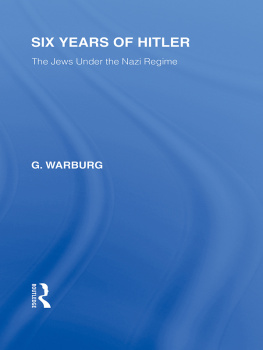

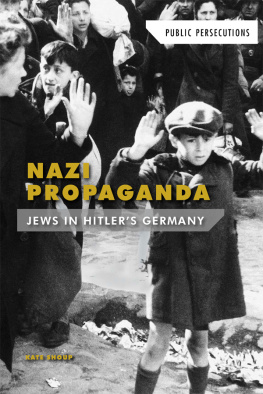
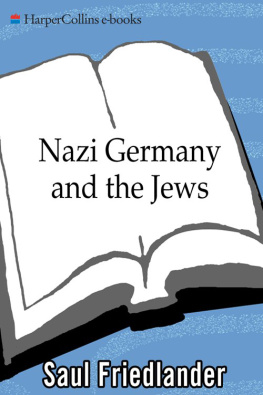
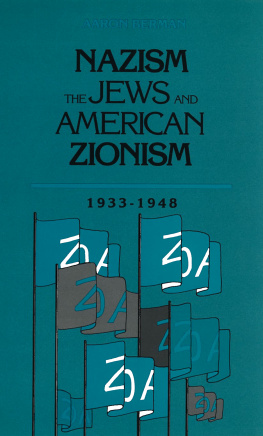
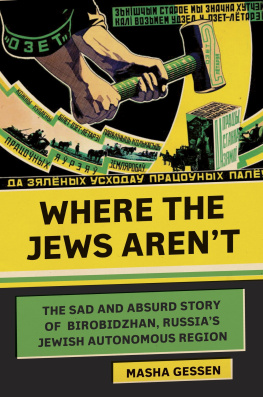
 The paper used in this publication meets the minimum requirements of American National Standard for Information SciencesPermanence of Paper for Printed Library Materials, ANSI/NISO Z39.48-1992.
The paper used in this publication meets the minimum requirements of American National Standard for Information SciencesPermanence of Paper for Printed Library Materials, ANSI/NISO Z39.48-1992.